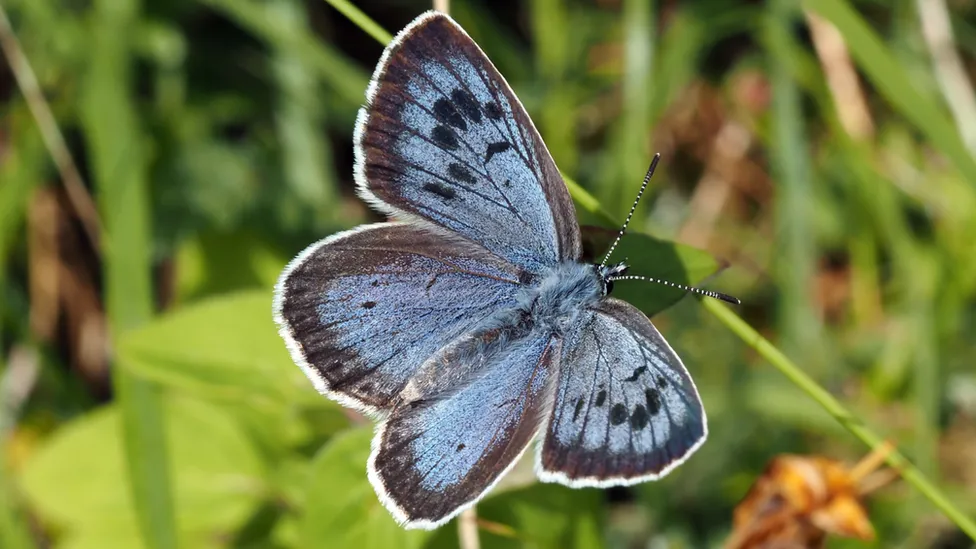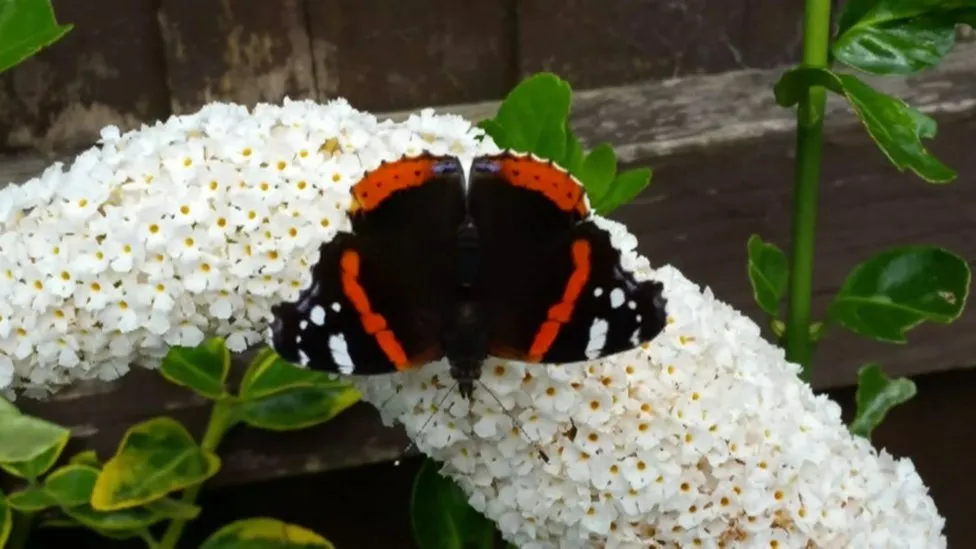NEWS
Huge recovery for butterfly once extinct in the UK
An endangered butterfly that was once extinct in the UK has had its best summer in 150 years. The large blue butterfly is one of Europe's most endangered insects but thousands have been recorded this summer in south-west England. It is the result of a long-term conservation project, led by the Royal Entomological Society. Scientists said the success story shows how species at risk of extinction can be saved. Many other rare species also benefitted from the conservation work across around 40 sites in Somerset and in the Cotswolds. The large blue was declared extinct in the UK in 1979. Four years later caterpillars were brought from Sweden in an attempt to reintroduce the species in England. Research ecologist David Simcox, one of the duo who reintroduced the butterfly in 1983, said it was "incredibly satisfying" to see them now thriving. "I didn't have a grey hair on my head when I started. Now it's all grey," he told BBC News. Back in the 1980s Mr Simcox and his colleague, Oxford University professor Jeremy Thomas, did not expect this type of success. "Obviously you have hope, but the first 10 years were difficult, the national population was under 10,000 eggs," Mr Simcox explained. In contrast, this summer conservationists counted 750,000 large blue butterfly eggs. From those, they estimated that around 20,000 butterflies flew, making the south-west of England the largest known colony in Europe.

Big Butterfly Count: Some species almost halved in NI
Butterflies continue to struggle in Northern Ireland, according to the results of the 2022 Big Butterfly Count. The project by Butterfly Conservation was carried out for just over three weeks during the summer, as it has been every year for more than a decade. It showed the numbers of some species have almost halved in Northern Ireland, while others are performing better. A representative from the organisation said numbers "just aren't high enough". Rosie Irwin, senior engagement officer with Butterfly Conservation Northern Ireland, said they were typically seeing about nine species in the average count. "It's not what we would expect to see," she said. "There are approximately 27/28 species in Northern Ireland, then 32 or 33 give or take a few migrant species across the island of Ireland, so you would expect to see a lot more than that." Species like the Small White and Silver Y showed declines of almost 50%. Other species, like the Red Admiral, have tripled while the Peacock doubled.

Butterflies in major decline in Northern Ireland, says report
One of Northern Ireland's butterflies appears to be on the edge of extinction, while others are struggling, according to a report. But a species only found in Northern Ireland, the Cryptic Wood White, is doing better. Scientists have warned that time is running out to halt the decline of butterflies across the UK. A charity involved in the report, Butterfly Conservation has called for targeted action and more resources. Butterflies are regarded as a barometer for climate change and habitat loss as they react quickly to any change in their ecosystem. The first State of the UK's Butterflies report since 2015 showed 80% of species were declining in abundance, distribution or both in the last 50 years. There are 59 species of breeding butterflies in the UK.

Big Butterfly Count: Some species almost halved in NI
Butterflies continue to struggle in Northern Ireland, according to the results of the 2022 Big Butterfly Count. The project by Butterfly Conservation was carried out for just over three weeks during the summer, as it has been every year for more than a decade. It showed the numbers of some species have almost halved in Northern Ireland, while others are performing better. A representative from the organisation said numbers "just aren't high enough". Rosie Irwin, senior engagement officer with Butterfly Conservation Northern Ireland, said they were typically seeing about nine species in the average count. "It's not what we would expect to see," she said. "There are approximately 27/28 species in Northern Ireland, then 32 or 33 give or take a few migrant species across the island of Ireland, so you would expect to see a lot more than that." Species like the Small White and Silver Y showed declines of almost 50%. Other species, like the Red Admiral, have tripled while the Peacock doubled.

